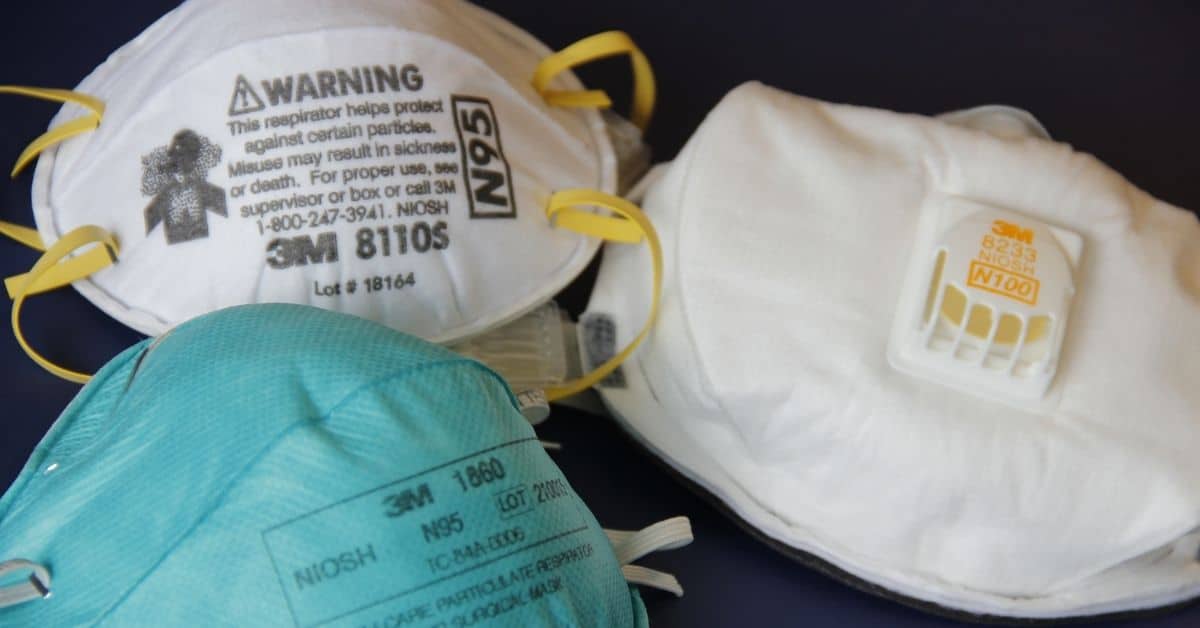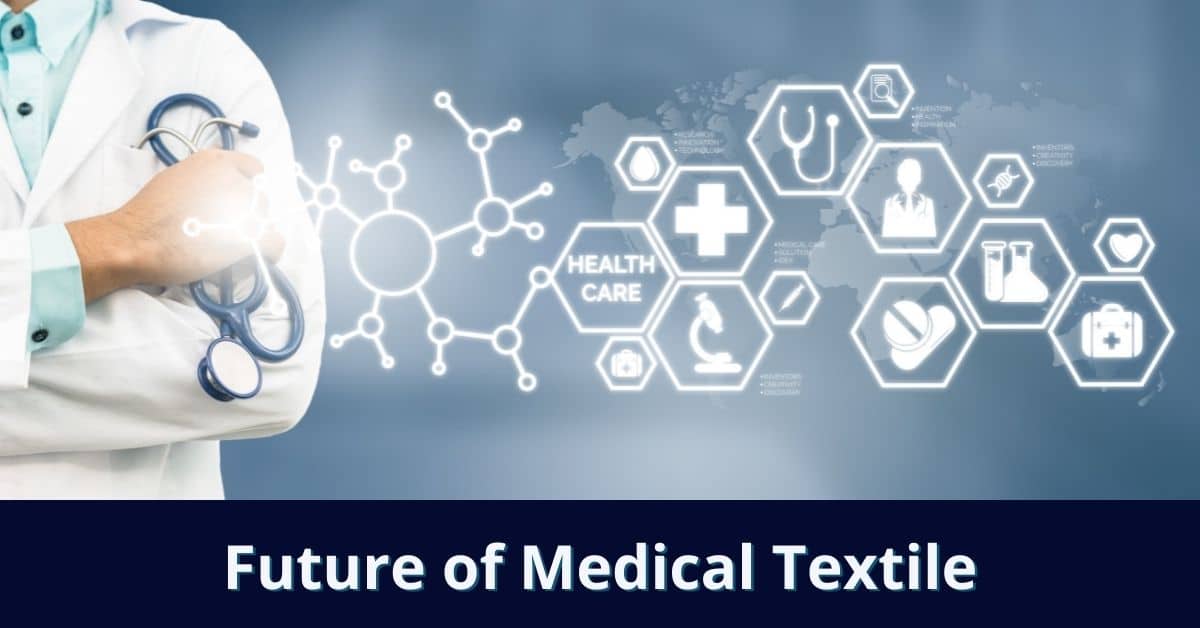Medical textile is considered one of the most important innovations that will be used to save lives in the medical application area! Today, we will learn about Meditech or Medical Textile and its 8 Inconstant Application of Medical Textile.
Table of Contents
What is Medical Textile?
Medical textiles include all textiles used for emergency, clinical, surgical, and sanitary purposes. New fabrics are most commonly used in medical materials. Due to their advantages, their market share is significantly higher than other medical materials.
Medical Textile Definition:
Medical Textile is a fiber-based structure or textile product used for clinical treatment or first aid of any medicine. Application of medical textile is a highly specialized and biocompatible technical textile and known as MEDTECH for medical and sanitary applications.
Compared with other tissue-forming processes. Although all looms on the market are suitable for producing medical materials, the new computer-controlled flat-bed loom production line is convenient for making medical materials because the equipment can be used for production and large series. Now, let’s check out the types of fabric used in this field.
Medical fabric made of high-quality fibers can prevent the growth of dangerous bacteria. It is used in personal care areas where the accumulation of hazardous bacteria may be harmful to health. Metal salt compounds ultimately fight bacteria and fungi. The fiber composite material is embedded in the fiber matrix so that it can be cleaned and wear-resistant.
Microbial contamination on the surface is a common problem in hospitals and healthcare facilities, and it can cause infection and cross-infection. Surgical materials must provide adequate protection against microorganisms, body fluids, and aerosols. For the human body, intangible or implantable medical devices and external devices, preventing diseases is essential.
It has been used to dress wounds in various ways and prevent patients from getting infections. Medical Textiles can also be used for other purposes, such as support garments that reduce pain or immobilize joints during surgery.
Medical textile is considered an alternative to surgical procedures that involve sutures when it comes to closing incisions on skin surfaces and tissues. Medical textiles also help surgeons in achieving a more precise cut.
Medical Textile Examples:
Here is a medical textile products list:
- Masks
- Medical Caps
- PPE
- Bandages
- Gowns
- Surgical cover
- Wipes
- Plasters
- Wound care pad
- Drapes
- Blankets
- Cover stock
- Surgical hosiery
- Artificial Kidney & Liver
- Artificial tendon, etc.
Classification of Medical Textile
1. Implantable Materials:
There is an exceptional kind of material construction utilized for different purposes inside the human body. The utilization of implantable material can be seen in the conclusion or medical substitution procedure. For instance: Sutures, Soft tissue inserts, Orthopedic inserts, cardiovascular inserts, and so forth are utilized in materials.
2. Non-Implantable Materials:
Non-implantable textiles are mainly utilized for outer utilization of the body; for example, it is used to help in the healing of different injuries on the external piece of the body. These materials should be non-harmful and impervious to allergens and malignant growth-causing powerhouses.
3. Extra Corporal Devices:
Such gadgets are broadly utilized in present-day clinical science. This material is used to supplant different organs inside the assemblage of contaminated individuals. These gadgets should have non-harmful, non-cancer-causing, bio-similarity properties.
4. Medical care and Hygienic Products:
A significant space of medical textile material is medical services and cleanliness affirmation. These materials are used to secure doctors and well-being labourers and prepare wards while treating patients in the emergency clinic. They will have non-poisonous, non-cancer-causing, and so on properties.
Medical textiles are a combination of textile technology and medicine. In the medical field, technical textiles are not only used for skin contact but also for essential functions of the body. Textiles provide unprecedented protection, comfort, and cost savings for the medical and hygiene industries. Today, Diversified Medical Textile Applications are remarkable among the other segments of medical textiles.

Application of Medical Textile
1. Artificial kidney:
An artificial kidney is a dialysis-based device that can artificially purify the blood. Generally, the system uses hollow membrane fibers, such as hollow rayon, triacetate, polyvinyl alcohol, and polyester fibers.
2. Artificial cornea:
This technique is used to treat blindness. The textiles used need to be flexible as well as must have sufficient mechanical strength.
3. Artificial liver:
An artificial liver has been developed recently. The liver will undergo various biochemical reactions, which is a complicated device because this is where the body undergoes biological reactions. The device is used to separate and remove plasma from the patient’s body and dispense fresh plasma.
4. Artificial ligament:
The artificial ligaments can be made of synthetic fibers, such as polyester and collagen.
5. Artificial bones:
A team from Deakin University in Australia stated that artificial bones are made of waste denim used in the human body. A multi-functional Nd renewable material is used for manufacturing artificial bones.
6. Artificial blood vessels:
Large and medium-diameter artificial blood vessels are manufactured of polytetrafluoroethylene film or PET fabric.
7. Sanitary Napkins:
Sanitary napkins are made of three layers of medical textile materials. The inner layer in contact with the human body is made of wool. The inner layer needs to have some special properties, such as portability. Menstruation is fast, and blood flows from the inner layer to the main layer, comfortable, soft, elastic, and blood-resistant. The inner layer of the sanitary napkin is composed of a special polymer with super-absorbent properties. The outer layer is made of polyethene.
a. Diapers:
There are usually two types of diapers:
- slippery type and
- napkin type.
Diapers are mainly used for babies and adults. Diapers, like sanitary napkins, have three layers.
8. Surgical gowns:
The primary material for the production of surgical gowns is non-woven fabrics. The whole dress is composed of three separate layers of non-woven fabric.
Outer layer non-woven polypropylene 30 g/m². Medium level-15 GSM. A fabric made of polytetrafluoroethylene (PTFE) and polyester wool, about 25 grams per square meter. The water recovery capacity of polypropylene is 0%, so it is suitable for the outer layer.
a. N95 Mask:

“N” stands for “no oil,” meaning anyone can use this mask in this environment as long as there are no oily particles. And “95” means that the mask does not correspond to 95°. Droplets of 3 microns or more will not penetrate the mask wall. This mask consists of several layers of wool, mainly polypropylene.
b. Surgical mask:
The surgical mask is made of non-woven fabric, which can maintain filtration as well as air permeability. It is mainly composed of 2025g/m² polypropylene. You can also use polystyrene, polycarbonate, or polyester. It is made of multiple layers of wool, which can effectively resist bacteria/viruses larger than 1 micron.
Medical textiles are used for:
- Non-implantable (wound dressings, bandages, gauze, etc),
- Implantable (artificial arteries, sutures, vascular grafts, etc),
- Extracorporeal devices (artificial organs, etc) and sanitary products.
Surgical textiles used by medical staff belong to the classification of health and hygiene products. Some products have strength, flexibility, absorption, or biodegradability.
Hence, medical textiles are a significant piece of specialized materials, from huge amounts of dispensable items for child diapers, female cleanliness, and grown-up urinary incontinence. According to a logical perspective, medical textiles are at the interface of specialized disciplines and life sciences; from one perspective, technological viewpoints include material apparatus, material science, measure control, testing and affirmation, and so on, which are essential for creating top-notch clinical materials.
Importance of Health Textile
Medical textiles are necessary for preventing and fighting infections. Medical fabrics provide us with an inexpensive way to protect healthcare personal and their patients from viruses, bacteria, and other microorganisms.

Medical fabric made of high-quality fibers can prevent the growth of dangerous bacteria. It is used in personal care areas where the accumulation of hazardous bacteria may be harmful to health. Metal salt compounds ultimately fight bacteria and fungi. The fiber composite material is embedded in the fiber matrix to be cleaned and wear-resistant.
Microbial contamination on the surface is a common problem in hospitals and healthcare facilities, and it can cause infection and cross-infection. Surgical materials must provide adequate protection against microorganisms, body fluids, and aerosols. For the human body, intangible or implantable devices, and external devices, preventing diseases is essential.
Surgical textiles such as surgical gowns, gloves, and masks are common in operating rooms to protect the surgical team and patients from spreading dangerous microorganisms/viruses. It is suitable for surgical personnel who need to maintain its effectiveness without reducing its effectiveness. The private environment created by using protective clothing, gloves, and masks increases the possibility of thermal fatigue, which has been shown to increase error rates, reduce performance, and reduce efficiency. In addition, providing adequate physical comfort to healthcare providers can have a positive psychological impact.
Future Application of Medical Textile
As a new type of technical textiles, medical textiles play an increasingly important protective role in medical care. Medical materials include various soft products used in medical and sanitary applications, including surgical, prosthetic, and dental applications. Due to the aging of consumers and health advocates, long-term demand is expected to remain strong.

Due to the COVID situation, all the countries need to re-establish their economies. Otherwise, prosperity, technology, and productivity gaps may widen across national borders. These changes require tactical changes, including strengthening and expanding processing capabilities, filling infrastructure gaps, developing sustainable textile and apparel manufacturing facilities, and strengthening the country’s overseas image as a preferred destination for textiles and manufactured products.
This change also requires new cooperation between many different participants. Brands and weaving factories can also achieve a stronger company vertical integration. Such collaboration can create huge added value within the country and provide a high return on investment.
IDB has set clear goals to stimulate public and private investment in its 57 member states to accelerate its economic and social development and improve the competitiveness of key industries related to the world market.
Overcoming the obstacles caused by the pandemic and recovering quickly is not easy; new cooperation and methods are needed to create added economic value. Medium and long-term interests have the strongest ability to resist the next major crisis.
How do medical textiles change conversational ones?
An important application area of tissues in medicine has emerged, such as wound care and chronic wound prevention. Medical textiles must have biocompatibility, flexibility, and durability. Sorbagson dressings have been improved to provide more comfort when dressing wounds. Some super absorbent polymers are innovative, including polyacrylate and sodium acrylate, which enhance fibers’ absorbency.
Recent developments and specific requirements call for innovation in surgical sutures, including gelatin-coated gut sutures with serrated teeth. Spider in goat breast. Textile materials have aroused great interest in medical technology, among which materials in the form of monofilament, multifilament, woven, and non-woven structures are used for biological and medical purposes. The main requirement of textile materials is the bioabsorption and biocompatibility of the human body at the place of use.
Future of Medical Textiles
As a new type of industrial textiles, medical textiles play an increasingly important protective role in medical care. Medical materials include various soft products used in medical and sanitary applications, including surgical, prosthetic, and dental applications. Due to the ageing of consumers and health advocates, long-term demand is expected to remain strong. The value of sanitary products in the healthcare industry is approximately $73 billion per year. In 1990, medical textiles accounted for 9% of global industrial textile consumption, and it is estimated that consumption will increase at an annual rate of 4.5% by 2010.
Most disposable sanitary products and a large part of medical textiles are made of non-woven fabrics, and it is estimated that the average annual cost is 14.5 billion U.S. dollars. Annual sales. It is expected to increase by 7% in the next five years. The fibers used in certain sanitary products, the main fabric structure, the textiles used in each category, and the requirements.
How many classifications of medical textiles?
There are four classifications of medical textiles. These are as follows:
i. Implantable products,
ii. Non-implantable products,
iii. Healthcare and Hygiene products,
iv. Extracorporeal devices.
Why are non-woven fabrics used in medical textiles?
Non-woven fabrics are vital in medical textiles due to their remarkable properties. They offer superior barrier protection, high breathability, and cost-effectiveness. With a particle filtration efficiency of up to 99%, non-wovens are essential in preventing the spread of infections. According to industry statistics, over 50% of medical textiles rely on non-woven materials, underlining their crucial role in healthcare.
Conclusion
Anyone who invests in the textile and apparel market can obtain significant economic advantages through targeted investment. Environmentally friendly and recycled fibers will replace resource-intensive raw materials more quickly, providing such opportunities. In addition, technical textiles and smart textiles have huge application potential in various industries, such as automobile textile, construction, and medical technology.
COVID-19 shows the need for blockchain technology to ensure the transparency and traceability of the entire supply chain, thereby opening up other opportunities in the market. COVID-19 may also spur a shift to close relocation, bringing factories closer to their end markets. The country’s location, medical textile, and apparel industry’s ability to provide low-cost manufacturing, competitiveness, quality medical products, and efficient delivery times.
